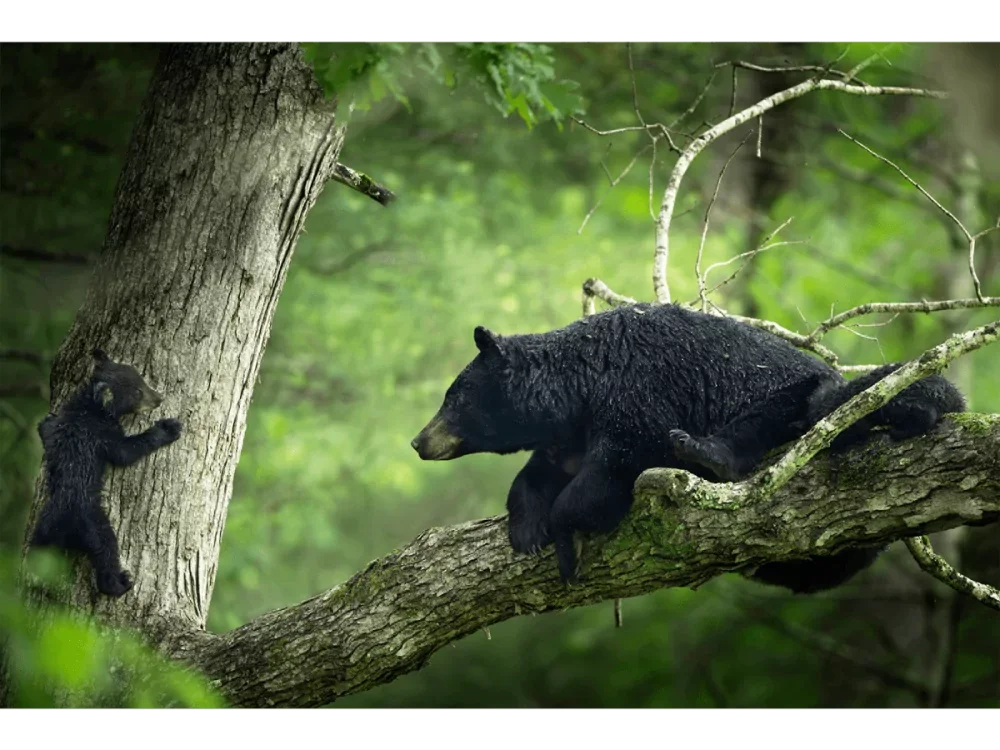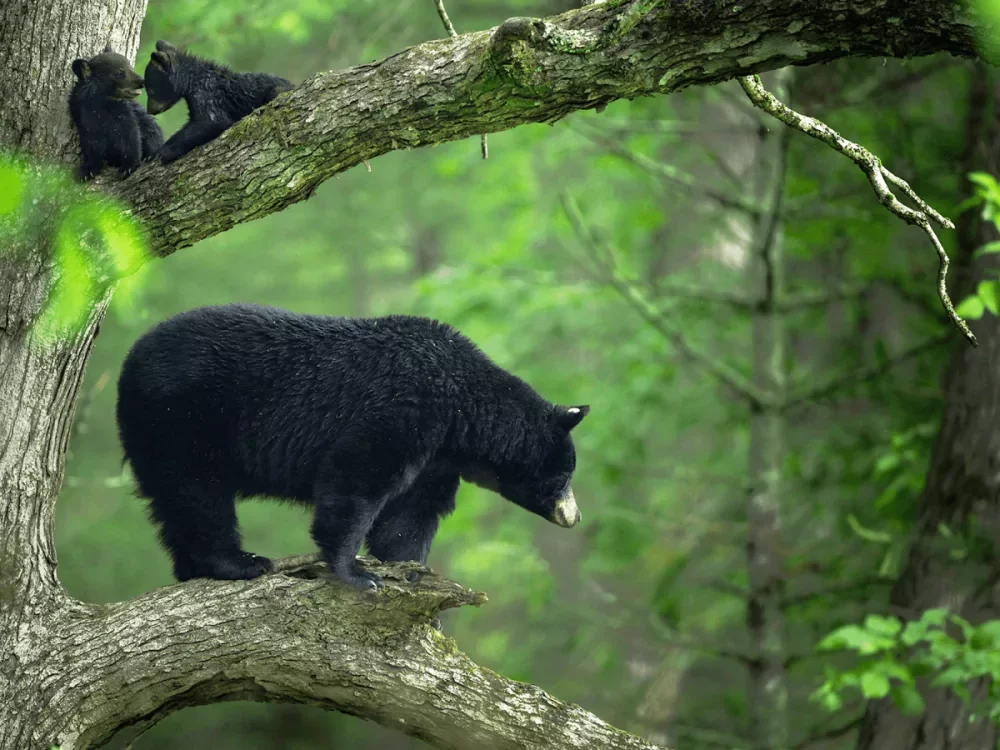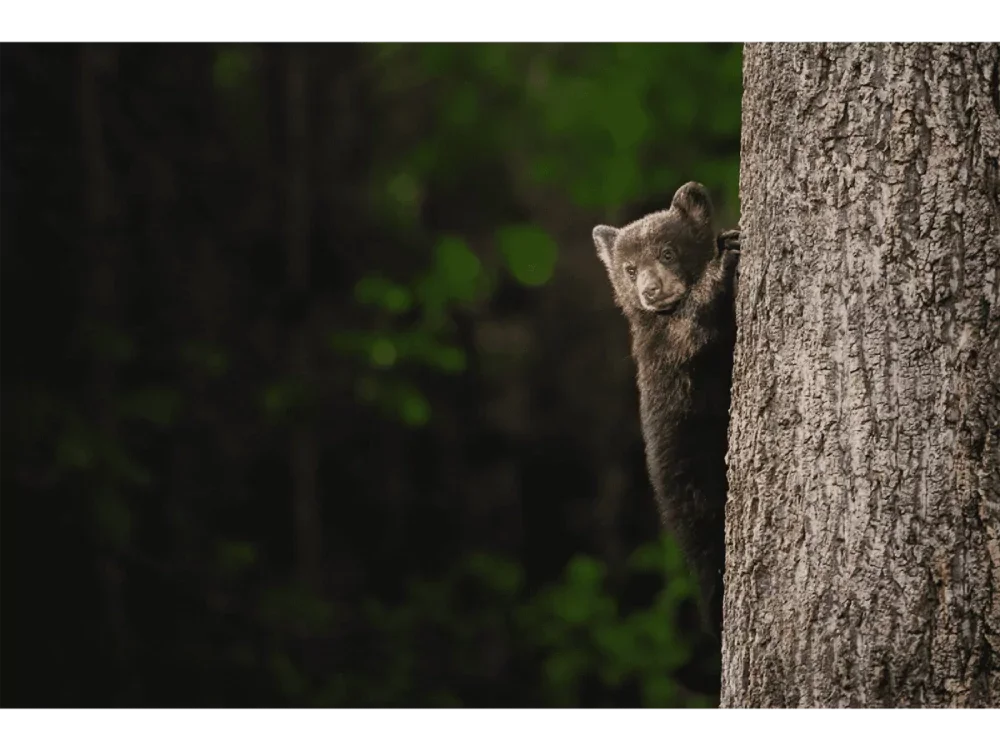Black Bear Photography in Great Smoky Mountain National Park
Large male Black Bear at Great Smoky Mountain National Park
Introduction
I just returned from spending a wonderful week at Great Smoky Mountain National Park photographing black bears and other wildlife. This post will focus on providing an overview of best locations to photograph bears in GSMNP, tips to help you take great bear photos and advice on how to stay safe and ethical while interacting with wildlife.
Overview of Great Smoky Mountain National Park
Great Smoky Mountain National Park straddles the borders of Tennessee and North Carolina. It is renowned for its diversity of plant and animal life. With over 19,000 documented species of plants, animals, fungi and other organisms it is the most ecologically diverse park in the US National Park System and one of the most diverse places on Earth.
The park was created in 1934 and was officially dedicated by President Roosevelt in 1940. It is the most visited National Park in the United States seeing over 14 million visitors in 2021 and over half a billion since opening in 1940.
It’s truly one of the great parks in the National Park system. I’ve included some resources in the links below if you’d like to learn more or plan a trip.
Importance of Black Bears in nature.
Aside from being my favorite photography subject, bears play an incredibly vital role in the ecosystems in which they live. Often called “ecosystem engineers” they make the forests stronger through their foraging habits which deposit plant and berry seeds in their droppings. In areas with bears that consume fish, they provide critical nitrogen to the forest floor which helps trees thrive. They help maintain healthy populations of deer and other species through predation which helps increase biomass. Lastly, they do occasionally feed on carrion, which helps prevent the spread of disease. Bears are incredibly vital part of the Smoky Mountains and in some estimates have helped in creating one of the most ecologically diverse places on earth.
Wildlife Locations in the Park
You will find bears throughout the park; however I generally focus my time looking for them in two places. The main reason to focus on each of these locations are that they both contain open fields along the edge of forests for bears to more easily be spotted and photographed. They also happened to be two of the more popular locations in the park to find wildlife.
Cades Cove
Cades Cove is probably the best place within Great Smoky Mountain to photograph black bears. It has easy access with large tracts of fields surround by woodland and if you were going to pick just one place to focus your wildlife viewing, this would be the spot.
History of Cades Cove
Cades Cove is basically a valley within the borders of the national park. It was first inhabited by European Settlers around 1820, who found the area contain very productive farm land and quickly built homes, barns and cleared the land for farming.
By the mid 1800’s there were over 600 people living in the valley and they’d built a thriving community including churches, schools and a post office.
In the 1920’s, North Carolina and Tennessee began buying land around the valley for the creation of a park. Many of the settlers were eventually bought out with a few hold-outs being allowed to sign lifetime leases before the land was given over the park. By the late 1940’s most of the residents had gone with the last school and post office closing up. Today, there are many historic cabins and churches scattered through the valley which are maintained by the park service. The valley itself has become one of the attractions within Great Smoky Mountain National Park.
How to Reach Cades Cove
Address: Cades Cove, Tennessee 37882
Where to Stay
If you’re going to Cades Cove and GSMNP mainly to view and photograph wildlife and are not really into the tourist attractions then I would recommend staying in the Wears Valley/Townsend area on the Tennessee side of the park. It provides easy and fast access to Cades Cove and highway 441 (the main road through he park) and will avoid having to deal with horrible Gatlinburg traffic. We typically find a cabin rental for the week on VRBO or AirBnB. I’ve included a link below to VRBO.
Cataloochee Valley
Cataloochee Valley is the second area I’d recommend, though I’ve personally had limited success in photographing bears here (This is the place to go in the fall for the Elk rut though!).
Like Cades Cove above, Cataloochee was also a historic settlement area and still contains many buildings and structures from the late 19th century. This area also has open expanses of fields lined by forests which makes it ideal viewing for wildlife.
How to reach Cataloochee Valley
Warning: The road to Cataloochee Valley is winding and narrow with steep drop offs and no guard rails. It’s also primarily gravel until you get into the valley itself. Be aware of this before attempting to go there and I would strongly suggest a vehicle with high clearance and 4-wheel drive (ie. Truck, SUV, etc).
Cataloochee is located on the far eastern side of the park off Interstate 40. If using google maps, the address below should get you directions:
Address: Cataloochee, North Carolina, 28785
Where to stay
I typically don’t stay in this area because I focus most of my time on Cades Cove, however I did try to come over here once during the week. The challenge with Cataloochee and photography is access. I typically like to get onsite before sunrise and/or leave after sunset. The road here is dicey in good light, so my aging eyes will avoid doing this drive in the dark. However, if you’re really wanting to focus on this area or are interested in Elk during fall, below are some recommendations.
Cataloochee Campground
If you’re ok with camping and want to focus on this area for a few days, I think this is a great option. I’ve not camped there personally, but I understand that it’s a fairly basic campground. No RV sites or electric hookups; however they do have flush toilets and water. There is no camp store so you should plan on bringing whatever supplies you need for your stay. I’ve included a link below to the campground site on the NPS website.
Maggies Valley
Maggies Valley is a resort area located in North Carolina fairly close the Cataloochee Valley. The area has a number of rentals available on VRBO and has a fair number of restaurants and shops as well. I’ve included some links below for more information.
Tips for Photographing Black Bears
Below are a collections of tips, tricks and recommendations to help you find and capturing sharp black bear photos.
Where and when to visit GSMNP
The first tip seems simple but It’s the most important: To photograph bears, you need to go to locations which have high densities of them. This is a reason why GSMNP is such great locations because they have one of the highest bear densities in the country.
In the Smokies, bears usually emerge from dens in late March and head to their dens in December. Typically, early spring and late fall are great times because they’re on the move looking for food, but you can really see them anytime during those months.
Bears are most active early in the morning and late at night (as are most other wildlife). Your best bets are those times. I typically try to arrive around sunrise and am packing things up around 10-11am and head to the rental for an afternoon rest before returning in the evening until dark.
I typically focus my searches on areas where open fields and forest meet. Obviously, you can and will find bears in the forest when hiking, but trees and branches can make photography difficult. That’s why I tend to focus on those open areas.
Techniques to help take great bear photos
I’m a Nikon shooter, so most of my tips and techniques will be mainly around that ecosystem, but they’ll be applicable regardless of what system you choose to shoot. However, some of the settings may be called something different in your camera system so be mindful of that.
Below are my general settings and techniques. I tend to keep things fairly simple when shooting and try to stay focused on a small handful of things so that I spend my time shooting photos instead of fiddling with the camera settings. None of these are hard and fast rules, but mostly my starting points when shooting and I adjust as needed.
Use Auto-ISO
Use Auto-ISO and if your camera allows set a max allowable ISO. I set my max ISO to 12,800. This way the camera will always keep me between ISO 64 AND 12,800 and will determine the best setting based upon how it meters the scene. I find this incredibly helpful in early morning and late evening conditions when light is changing rapidly. It can be slightly annoying as well because you’ll see exposure change sometimes even within a set of frames; but overall I find the camera gets this right more often than I do in manual mode.
Spot Metering
I generally use spot metering when photographing bears. Occasionally I may switch to matrixed metering, but I find spot works best for me because bears are normally going to be the darkest thing in your frame and the goal is to get them exposed properly at all costs(even if you somewhat overexpose the background). As long as I’m getting my focus point on the bear and get my shutter speed right, I don’t generally have to worry too much about under exposing the bear.
Expose to the right slightly
I often expose to the right (overexpose) about 1/3 to 2/3 a stop via the exposure compensation on the camera. Many folks don’t use this or know how, but exposure compensation is probably one of the most valuable camera features for wildlife. Once you figure it out, you won’t ever go back. The main reason I do this often is that I find photos which are slightly overexposed (“slightly” being the key word) are much easy to correct in Adobe Lightroom than underexposures. If I’m going to hedge my exposure, I’d rather hedge to be overexposed.
3D tracking and Eye AF
I use 3D tracking or Wide Area AF focus modes, but tend to favor 3D tracking. I use this in conjunction with Animal Eye AF. I think this is a powerful combination because the camera will automatically detect the eye of the bear, lock onto it and track it while I shoot frames.
Safe shot first then slow your shutter
My first photography love was landscape, and when photographing landscapes you’re always looking for ways to keep the shutter open for as long as possible to allow the maximum amount of light and detail to hit the sensor without over exposing. I don’t know that this makes a difference, but I have a similar mindset with wildlife. Basically, I’m always trying to figure out what the slowest shutter speed I can use to freeze the subject, but allow the most light to hit the sensor. So for example, if I can freeze a bear shooting at 1/500sec I’m always going to prefer that shutter speed over say 1/2500sec because I feel that the picture will be more detailed.
In practice, the way this normally works is that my first few series of shots will be done with a “safe” speed that I know will freeze the action (or create the effect I want) and then I will start dialing down from there.
Shoot bursts, it’s only memory
Shoot bursts of images. I keep my camera at 20 frames per second all the time when shooting wildlife. It’s not uncommon for me to shoot hundreds of frames of the same scene and then I pick the best photo from the group. It’s only erasable memory on a card, so there’s no harm in filling cards up and picking the best from the sequence and deleted the rest. I do this a lot.
Bear foraging in Cades Cove.
Safety measures for photographing black bears in GSMNP
The National Park Service site has a full list of rules for how to handle bears. I would strongly suggest reading and following everything within. The biggest thing to know is that it’s illegal to willfully approach a bear and be within 50 yards of it. I see more and more people visit these areas and want to behave as if visiting a zoo. They will intentionally walk towards a bear and get very close so they can take a selfie on their phone (in some cases turning their backs to the bear). Not only is this behavior potentially illegal it’s also incredibly dangerous to both human and bear.
Don’t get too close
I struggle with sharing the photo below, but I think it’s important to share the type of behavior I see more and more frequently as an example of what you should not do. I shot this photo with a 400mm lens at about 50-60 yards from the bear hoping that it may emerge from the forest into the field. These two individuals walked past me and right up to within 25-30 feet of this bear. Thankfully the bear simply walked deeper into the forest and there was no issue. Several people let these two know they were too close but they ignored their warnings and stood there to watch the bear.
These two are way too close to this bear!
Ethical Practices
I try to follow a simple mantra when photographing wildlife: “Observe, don’t Disturb”. Below are some rules I try to follow which have helped to keep both myself and the bears safe.
· Stay a minimum of 50 yards from the bear.
· Do not block or impede the bears walking line.
· No fast movements to trigger a chase response.
· Don’t turn your back to the animal.
· Don’t try to get their attention or alter their behavior (This is a pet peeve with other photographers who will try to get bears to look up at them).
· Do not feed them or keep food on you while photographing.
Finally, I’m a big fan of an organization called Bearwise and often point others towards their site and materials. They do a great job in promoting ways for people to live safely with bears and do a wonderful job. I’ve included their link below.
Conclusions and Resources
Great Smoky Mountain National Park is one of the best places in the US to see and photograph black bears in a natural environment. It’s the most popular park in the NPS system, so you should expect large crowds of people and cars but it does provide opportunities for great wildlife photography. For someone who lives slightly more than two hours away, it’s a perfect place for me to visit and photograph bears and i’ll be returning often. I personally think Alligator River is better for bear photography, but you can’t beat GSMNP for scenery and bears together.
Links
Great Smoky Mountain Visitor Center
Great Smoky Mountain Park rules for viewing bears
Black Bears of the Smokies









